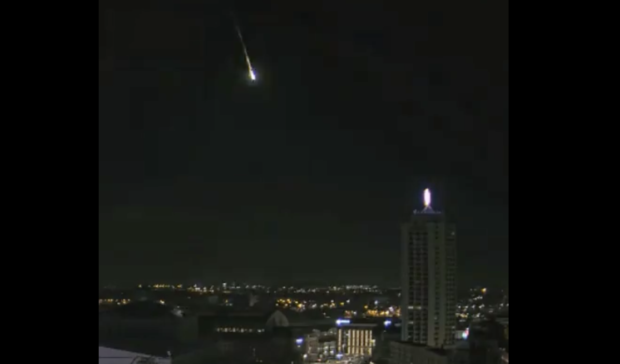
A video captures a small asteroid blazing through the sky over eastern Germany.
Early Sunday morning, a small asteroid entered the Earth’s atmosphere and disintegrated while passing through the skies above eastern Germany.
Videos shared on social media throughout the day showed the glowing object’s descent over Europe, shortly after the Hungarian researcher and self-described “asteroid hunter” Krisztián Sárneczky spotted it from an observatory in Hungary. Sárneczky is well-known for discovering minor planets and other space objects headed toward our planet, including two asteroids that respectively fell over France in 2023 and the Arctic Ocean in 2022, according to EarthSky, an astronomy website run by scientists and experts in the field.
On Sunday morning, Denis Vida, an associate with a Ph.D. in meteor physics from Western University in Canada and the creator of the Global Meteor Project, reported that the asteroid observed was approximately 1 meter in length. The Global Meteor Project aims to enhance meteor observation by utilizing a global network of upward-facing cameras.
A video showing the asteroid’s descent was shared on X (previously known as Twitter). The footage was recorded by a livestream camera in Leipzig, Germany. According to Vida, the asteroid likely released pieces of meteorites as it passed through the atmosphere and shattered. In an email to CBS News, Vida explained that the asteroid started to break apart approximately 50 kilometers (30 miles) away from Berlin.
According to EarthSky, the asteroid was originally known as Sar2736 until it was officially given the name 2024 BX1 by the International Astronomical Union’s minor planet center. This center is responsible for tracking data on comets and natural satellites that orbit major planets, such as their sizes and locations. The center receives funding from NASA’s near-earth object observation program and gathers information from observatories around the world.
The data log for 2024 BX1 at the center contains information from multiple observatories located in different European countries, including Spain, Croatia, Romania, Hungary, and Germany.
NASA’s Asteroid Watch team initially alerted the public about the asteroid’s upcoming approach through a post on social media on Saturday evening.
“Warning: A small asteroid will break apart and create a harmless fireball near Nennhausen, west of Berlin at 1:32am CET. Observers will have visibility if the sky is clear!” the post stated.
The space agency’s forecast was accurate, and the asteroid fell to Earth after midnight in central Europe, appearing as a “fireball” which is an astronomical term for a shooting star. The agency describes a “fireball” as an incredibly bright meteor that can be seen across a large area.
Emily Mae Czachor
Source: cbsnews.com